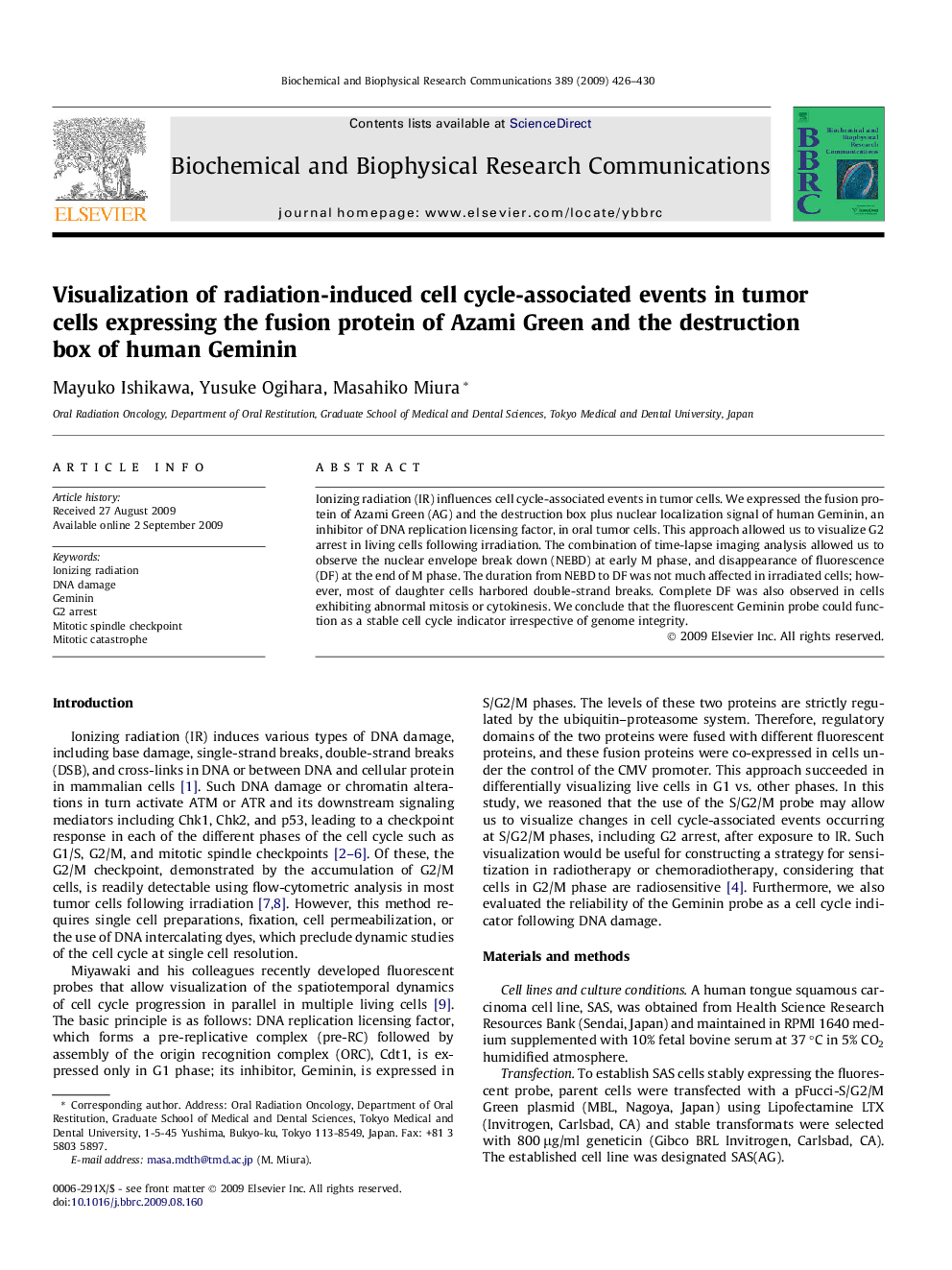| Article ID | Journal | Published Year | Pages | File Type |
|---|---|---|---|---|
| 1933522 | Biochemical and Biophysical Research Communications | 2009 | 5 Pages |
Ionizing radiation (IR) influences cell cycle-associated events in tumor cells. We expressed the fusion protein of Azami Green (AG) and the destruction box plus nuclear localization signal of human Geminin, an inhibitor of DNA replication licensing factor, in oral tumor cells. This approach allowed us to visualize G2 arrest in living cells following irradiation. The combination of time-lapse imaging analysis allowed us to observe the nuclear envelope break down (NEBD) at early M phase, and disappearance of fluorescence (DF) at the end of M phase. The duration from NEBD to DF was not much affected in irradiated cells; however, most of daughter cells harbored double-strand breaks. Complete DF was also observed in cells exhibiting abnormal mitosis or cytokinesis. We conclude that the fluorescent Geminin probe could function as a stable cell cycle indicator irrespective of genome integrity.
